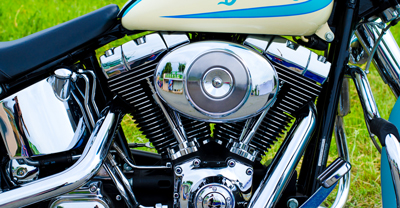Why take a motorcycle safety course


0 min. read
There's something undeniably magical about motorcycle riding—the blend of freedom, focus, and that unmatched feeling as you lean into a curve. But behind every great ride lies something just as important as the thrill: skill.
At Dairyland, a brand of the Sentry Insurance Group, we see the difference proper training can make. That's why we encourage safety courses for riders of all levels. These classes don’t just cover the basics—they can help build confidence, sharpen your control, and could even save you money on motorcycle insurance.
Let’s take a closer look at what a basic motorcycle safety course can offer.

Get a free motorcycle insurance quote that fits your ride style.
What you can learn in a basic motorcycle safety course
Taking those first rides can feel intimidating. A basic rider course provides a low-stress environment where you can build confidence and sharpen your skills—without navigating impatient drivers or complex traffic situations.
Most programs include hands-on training with provided motorcycles, along with real-time feedback from instructors to help improve your technique.
Here’s what you’ll typically learn during a certified training course:
Starting, stopping, and shifting with control
Turning smoothly at various speeds
Braking quickly without skidding
Swerving safely to avoid obstacles
Reading traffic and anticipating hazards
Performing pre-ride safety checks
Choosing the right protective gear
Before enrolling, confirm with the course provider whether they supply motorcycles and what gear you’ll need to bring.
Choosing the right protective gear
The right gear can help reduce the severity of injuries if an accident occurs. Instructors can help you understand how to select equipment that suits your body, bike, and riding style.
You’ll learn how different gear protects you—and what features to look for. While laws vary by state, here are common recommendations:
A DOT-approved helmet (often required for licensing)
Eye protection—such as goggles or a face shield
Full-fingered motorcycle gloves
Durable long-sleeve shirt or jacket
Armored, abrasion-resistant riding jacket
Long pants—preferably riding-specific or heavy denim
Over-the-ankle boots with non-slip soles
Reflective or high-visibility elements
Courses won’t just tell you that gear matters—they’ll explain why. You can get a clearer understanding of how gear can help protect you on the road and how to make practical choices based on your riding environment.
Where to find certified motorcycle training
A good starting point is the Motorcycle Safety Foundation (MSF). They offer courses nationwide for all skill levels, including online classroom courses for riders with tight schedules. Note: Hands-on instruction is still required to complete certification.
You can also check with:
Community colleges or technical schools
State Department of Motor Vehicles (DMV) websites
Motorcycle dealerships that host or partner with training providers
If you're pursuing a motorcycle license or insurance discount, make sure the course is state-approved.

Start your free motorcycle insurance quote now.
Benefits of taking a motorcycle safety course
A motorcycle safety course can do more than teach the basics—it can help sharpen your skills, build confidence, and keep you safer on the road.
Rider safety advocates and researchers have found that untrained riders may be more likely to be involved in accidents than those who complete a certified course. And for many people, what holds them back from riding isn’t a lack of interest—it’s a lack of confidence. Training can make all the difference.
Whether you're learning the ropes or returning after time away, here’s how a professional safety course can support your ride:
Build your rider network
You can connect with fellow riders in your community who share your passion for two wheels. These new connections often lead to ride groups, gear recommendations, maintenance tips, and lasting friendships.
Provide personalized coaching
Certified instructors can help identify and correct risky habits early—before they become second nature. Most riders finish with improved skills, better control, and more trust in their own abilities.
Streamline your licensing process
In many states, passing an approved motorcycle safety course allows you to skip the DMV riding skills test. You'll still need to pass a written exam, but this can simplify the path to your motorcycle license.
Possibly save on motorcycle insurance
Many insurers—including Dairyland®—offer discounts to riders who complete an approved safety course. In many cases, the savings can offset the cost of the course within just a few months.
Try riding before you buy
Not quite ready to commit to a bike? Beginner safety courses often include a loaner motorcycle and safety gear—so you can get a feel for riding without making a big investment. It’s a low-pressure way to find out if motorcycling fits your lifestyle.
See how much you could save on insurance
At Dairyland we value your commitment to safety—and we’re here to support it. Riders who complete approved motorcycle training courses may qualify for insurance discounts. It’s one more way we help protect your bike, your budget, and your love for the ride. Contact us today see how training could lead to savings.

Get a motorcycle insurance quote that fits you and your motorcycle.
The general information in this blog is for informational or entertainment purposes only. View our blog disclaimer.










